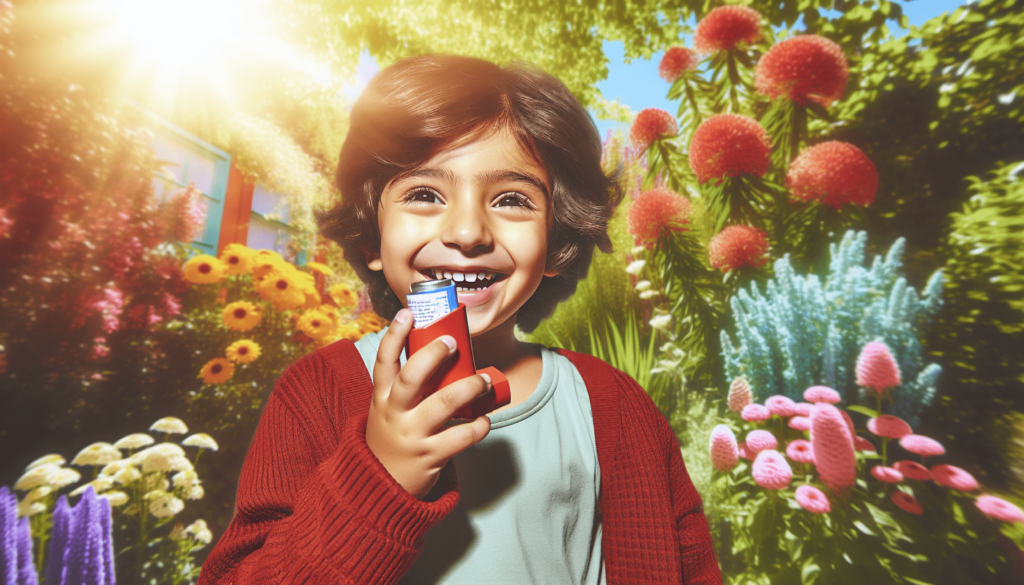Hey there! If you’ve been dealing with the challenges of managing your child’s allergies, you’re not alone. In our article, “Best Practices For Managing Allergies In Children,” we share practical tips and expert advice to help you navigate this often tricky terrain. From identifying common allergens to creating an allergy-friendly environment at home, you’ll get all the insights you need to keep your little ones comfortable and safe. Whether you’re a seasoned parent or new to this journey, our guide is here to support you every step of the way. Have you ever felt overwhelmed trying to manage your child’s allergies? If so, you’re not alone! Many parents share the same concerns about keeping their kids safe and comfortable. The good news is that there are several best practices you can use to effectively manage allergies in children. By understanding the causes, recognizing symptoms, and implementing specific strategies, you can significantly improve your child’s quality of life.

Understanding Allergies in Children
What Are Allergies?
Allergies happen when the immune system reacts to foreign substances known as allergens. These can include anything from pollen and pet dander to certain foods and medications. Your child’s body perceives these substances as threats, triggering an allergic reaction.
Common Allergens
It’s essential to know the common allergens that might affect your child. Here’s a table to help you identify some of these culprits:
| Allergen Type | Examples | Sources |
|---|---|---|
| Environmental | Pollen, Mold | Trees, grasses, flowers, damp areas |
| Food | Nuts, Dairy | Peanuts, eggs, milk, fish |
| Animal | Dander, Saliva | Pets like dogs and cats |
| Insect | Venom, Excrement | Bee stings, dust mites |
| Chemical | Detergents, Perfumes | Cleaning products, scented lotions, soaps |
Symptoms of Allergies in Children
Recognizing the symptoms of allergies can help you act quickly. Common signs include:
- Respiratory Issues: Sneezing, coughing, wheezing, and nasal congestion.
- Skin Reactions: Rashes, hives, and eczema.
- Digestive Problems: Nausea, vomiting, and diarrhea (typically in food allergies).
- Eye Irritations: Itchy, red, and watery eyes.
Diagnostic Methods
Consult a Pediatrician
Your first step should be speaking with a pediatrician who can help identify whether your child’s symptoms are allergy-related or another medical condition.
Allergy Testing
Allergy testing is an effective way to pinpoint specific allergens:
- Skin Prick Test: A tiny amount of potential allergens is pricked into the skin to observe for reactions.
- Blood Test: Measures the levels of allergy-related substances in the blood.
- Patch Test: Identifies causes of allergic skin reactions.
Keeping an Allergy Diary
Documenting your child’s symptoms and possible triggers can be incredibly beneficial. Note the time of day symptoms occur, activities they were involved in, and any foods they consumed. This data can assist healthcare providers in pinpointing specific allergens.
Best Practices for Managing Environmental Allergies
Home Environment Control
Taking steps to allergy-proof your home can make an enormous difference. Here’s what you can do:
- Dust and Vacuum Regularly: Use a vacuum with a HEPA filter.
- Control Humidity: Use a dehumidifier to keep humidity levels below 50%.
- Wash Bedding Weekly: Use hot water to kill dust mites.
- Use Allergen-Proof Pillow and Mattress Covers: These can help to prevent dust mite infestations.
Outdoor Activities
Limit outdoor activities when pollen counts are high. Websites and apps can provide daily pollen forecasts, which can help you make informed decisions about your child’s outdoor exposure.
Pet Management
If your child is allergic to pets, minimizing contact is crucial. For families who must keep pets, ensure that:
- Pets are bathed and groomed regularly.
- Bedrooms remain pet-free zones.
- Air purifiers are used to reduce dander.
Best Practices for Managing Food Allergies
Reading Labels
Always read food labels meticulously. Ingredients can change without notice, so it’s crucial to review labels every time you make a purchase.
Educate Your Child
Teaching your child about their food allergies can empower them to make safe food choices. Role-play different scenarios where they might need to ask an adult about ingredients or refuse a food politely.
Safe Food Preparation
When preparing food at home:
- Avoid cross-contamination by using separate utensils and appliances.
- Clean surfaces thoroughly after cooking.
- Develop a system like color-coded kitchen tools to designate allergen-free items.
Action Plans for Eating Out
Dining out requires a bit of strategy:
- Call the restaurant ahead to inquire about menu options and food preparation practices.
- Speak directly with the chef or manager about your child’s allergies.
- Bring safe snacks or meal options just in case.
Emergency Preparedness
Ensure that anyone responsible for your child understands how to use an Epinephrine Auto-Injector (EpiPen) and knows the emergency protocol. Always have your child’s medical information and emergency contact details readily available.

Best Practices for Managing Seasonal Allergies
Track Pollen Counts
Before heading outdoors, check the local pollen forecast. Knowing what to expect can help you decide if indoor activities are a better choice for the day.
Clothing and Hygiene Tips
When your child comes back indoors:
- Change their clothes immediately.
- Wash their hands, face, and hair to remove pollen.
- Encourage them to wear sunglasses and hats to minimize pollen contact.
Medication Management
Over-the-counter antihistamines and nasal sprays can be helpful. Always consult your pediatrician to find the most appropriate and effective medication.
Best Practices for Managing Skin Allergies
Identify Irritants
Common irritants include soaps, lotions, and certain fabrics. Once identified, avoid these irritants and opt for hypoallergenic products.
Skin Care Regimen
Maintaining a proper skincare regimen can alleviate skin allergies:
- Moisturize Regularly: Use lotions that are free of dyes and fragrances.
- Bathe Wisely: Limit bath time and use lukewarm water; avoid harsh soaps.
- Treat Mild Reactions: Use over-the-counter hydrocortisone creams for mild reactions or consult a dermatologist for severe cases.
Proper Laundry Care
Using hypoallergenic laundry detergents can be a game-changer. Rinse clothes thoroughly to ensure no detergent residue remains.
Working with Schools and Daycare Centers
Communication is Key
Clear communication with school staff is vital. Provide a detailed action plan, including symptoms to look for, steps to take in case of an allergic reaction, and emergency contact information.
Training and Awareness
Ensure that teachers, nurses, and administrators are trained to recognize the signs of an allergic reaction and know how to respond. Schools should have EpiPens and training for staff on how to use them.
Safe Eating Policies
Discuss the school’s food policy and ensure there are safe options for your child. Advocate for a no-sharing rule where children do not share their snacks or meals.
Psychological and Emotional Support
Understanding Anxiety
Living with allergies can be anxiety-inducing for both children and parents. It’s important to acknowledge these feelings and address them constructively.
Support Networks
Connecting with other parents facing similar issues can provide emotional support and practical advice. Online forums and local community groups can be valuable resources.
Professional Help
If your child is experiencing significant anxiety or emotional challenges due to their allergies, consulting a mental health professional can offer strategies and support to cope effectively.
Advancing Research and Advocacy
Stay Informed
Being well-informed about the latest advancements in allergy research can empower you to make better decisions for your child’s care. Subscribe to reputable medical journals and follow organizations dedicated to allergy research.
Advocacy and Involvement
Getting involved in advocacy can contribute to broader societal awareness and potential legislative changes that make environments safer for allergic individuals.
Participation in Studies
Consider participating in clinical studies. This offers the chance for new treatment options and contributes to the overall knowledge base of how to better manage allergies.
Summary
Managing allergies in children is an ongoing journey that involves vigilance, education, and proactive measures. By understanding what triggers your child’s allergies and implementing best practices, you can create a safer, more comfortable environment for them. Remember, you’re not alone in this journey. With the right strategies and support network, you can effectively manage your child’s allergies and help them lead a happy, healthy life.
